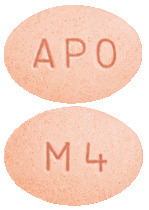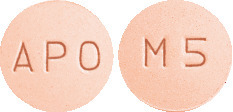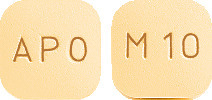What is in this leaflet
This leaflet answers some common questions about montelukast. It does not contain all the available information. It does not take the place of talking to your doctor or pharmacist.
All medicines have risks and benefits. Your doctor has weighed the risks of you using this medicine against the benefits they expect it will have for you.
If you have any concerns about taking this medicine, ask your doctor or pharmacist.
Keep this leaflet with the medicine. You may need to read it again.
What this medicine is used for
Montelukast is used to:
- prevent asthma symptoms, including those that occur during the day and at night-time
- prevent the narrowing of airways triggered by exercise
- seasonal allergic rhinitis (hay fever) symptoms.
Montelukast tablets are not used to treat an acute attack of asthma. If an acute attack occurs, follow your doctor's instructions for your reliever medicine, and keep taking your montelukast tablets each night or as prescribed.
As a preventive medicine for asthma, montelukast can be used alone or in combination with other preventive medicines, such as inhaled corticosteroids. Your doctor may reduce your dose of inhaled corticosteroid while you are taking montelukast.
How it works
Montelukast belongs to a group of medicines called leukotriene receptor antagonists. It works by blocking substances in your lungs called leukotrienes that cause narrowing and swelling of airways. Blocking leukotrienes improves asthma symptoms and helps prevent asthma attacks. Leukotrienes also cause allergic rhinitis symptoms. By blocking leukotrienes, montelukast improves seasonal allergic rhinitis symptoms.
Ask your doctor if you have any questions about why this medicine has been prescribed for you. Your doctor may have prescribed this medicine for another reason.
This medicine is available only with a doctor's prescription.
This medicine is not addictive.
Montelukast should not be used in children under 2 years of age. Safety and effectiveness in children younger than 2 years of age have not been studied.
Before you take this medicine
When you must not take it
Do not take this medicine if you have had an allergy to:
- montelukast
- any of the ingredients listed at the end of this leaflet.
Some of the symptoms of an allergic reaction may include:
- shortness of breath
- wheezing or difficulty breathing
- swelling of the face, lips, tongue or other parts of the body
- rash, itching or hives on the skin
Do not take this medicine after the expiry date printed on the pack or if the packaging is torn or shows signs of tampering. If it has expired or is damaged, return it to your pharmacist for disposal.
If you are not sure whether you should start taking montelukast, talk to your doctor.
Before you start to take it
Tell your doctor if you have allergies to any other medicines, foods, preservatives or dyes.
Tell your doctor if you are pregnant, plan to become pregnant or are breastfeeding. Do not take this medicine until you and your doctor have discussed the risks and benefits involved.
Taking other medicines
Tell your doctor if you are taking any other medicines, including medicines you buy without prescription from your pharmacy, supermarket or health food shop.
Some medicines may affect how montelukast works, or montelukast may affect how your other medicines work.
How to take this medicine
Follow carefully all directions given to you by your doctor. They may differ to the information contained in this leaflet.
How much to take
Your doctor will tell you how much of this medicine you should take, depending on your condition and if you are taking any other medicines.
For patients with asthma and/or seasonal allergic rhinitis, take montelukast only when prescribed by your doctor.
Asthma: take one tablet once a day in the evening.
Seasonal allergic rhinitis: take one tablet once a day.
For children 2 to 5 years old: take one 4 mg chewable tablet each day.
For children 6 to 14 years old: take one 5 mg chewable tablet each day.
For adults and teenagers 15 years and older: take one 10 mg tablet each day.
How to take it
Chew the 4 mg or 5 mg chewable tablets thoroughly and swallow. Do not swallow chewable tablets whole.
Swallow the 10 mg tablet whole with a glass of water.
When to take it
Asthma: Take your montelukast at bedtime each day. Taking your tablet at bedtime each day is expected to have the best effect. It will also help you remember when to take the tablets.
Seasonal allergic rhinitis: Your doctor will advise you on the best time of the day to take your tablet.
Asthma and seasonal allergic rhinitis: Take your montelukast at bedtime each day if you have both asthma and seasonal allergic rhinitis.
It does not matter if you take it with or without food.
How long to take it for
Continue taking your medicine for as long as your doctor tells you, even if you have no asthma symptoms or if you have an asthma attack.
Make sure you have enough to last over weekends and holidays.
If you forget to take it
Skip the missed dose and take your next dose as usual.
Do not take a double dose to make up for missed doses. This may increase the chance of unwanted side effects.
If you have trouble remembering to take your medicine, ask your pharmacist for some hints.
If you take too much (overdose)
Immediately telephone your doctor or the Poisons Information Centre (telephone 13 11 26) for advice or go to the Emergency Department at your nearest hospital if you think that you or anyone else may have taken too much of this medicine. Do this even if there are no signs of discomfort or poisoning. You may need urgent medical attention.
The most common symptoms reported with overdose in adults and children include thirst, sleepiness, dilated pupils, hyperactivity, and stomach pain.
While you are taking this medicine
Things you must do
If you are about to be started on any new medicine, tell your doctor and pharmacist that you are taking this medicine.
Tell any other doctors, dentists and pharmacists who are treating you that you take this medicine.
If you become pregnant whilst taking montelukast, tell your doctor immediately.
Go to your doctor regularly for a check-up.
Tell your doctor if your asthma gets worse while taking montelukast If an acute attack of asthma occurs, follow your doctor's instructions on what reliever medicine to use to relieve the attack.
Things you must not do
If you have been prescribed the 10 mg tablets, do not take two 5 mg chewable tablets in its place.
If you have been prescribed the 5 mg tablets, do not take half a 10 mg tablet in its place. The different strength tablets may not have the same effect, as they are absorbed slightly differently in the body.
Do not take montelukast to relieve an acute asthma attack. In case of an acute asthma attack, follow your doctor's instructions on what reliever medicine to use.
Do not give this medicine to anyone else, even if they have the same condition as you.
Do not take your medicine to treat any other complaint unless your doctor tells you to.
Do not stop taking your medicine, or change the dosage, without first checking with your doctor.
Side effects
Tell your doctor and pharmacist as soon as possible if you do not feel well while you are taking montelukast.
All medicines can have side effects. Sometimes they are serious but most of the time they are not.
Do not be alarmed by the following lists of side effects. You may not experience any of them.
Tell your doctor or pharmacist if you notice any of the following.
This list includes the more common side effects. Mostly, these are mild:
- fluid retention
- nose bleed
- headache, dizziness, drowsiness
- feeling unusually weak or tired
- upper respiratory tract infection.
- bedwetting in children
Muscle or nerve problems:
- muscle aches or cramps, joint pain
- decreased feeling or sensitivity, especially in the skin
- pins and needles.
Stomach or bowel problems:
- stomach pain
- nausea, vomiting
- diarrhoea.
Behaviour and mood-related changes have been reported in patients taking montelukast. If you experience these changes while taking montelukast, tell your doctor.
You should immediately inform your doctor if you start to have any:
- agitation, including aggressive behaviour and/or hostility (such as temper tantrums in children)
- suicidal thoughts and actions
- tremors
- irritability, restlessness
- anxiousness, depression (sad mood)
- disorientation (inability to know correct time, place or person)
- disturbance in attention, memory impairment
- seeing, feeling or hearing things that are not there (also called hallucinations)
- insomnia, dream abnormalities, difficulty sleeping
- obsessive-compulsive symptomstics or unusual movements
- sleep walking.
Tell your doctor immediately if you notice any of the following.
- skin rash or itchiness
- increased tendency to bleed, bruising
- fast or irregular heartbeats (palpitations)
- inflammation of the lungs
- nausea, vomiting, loss of appetite, feeling generally unwell, fever, itching, yellowing of the skin and eyes, and dark coloured urine (signs of liver disease)
- suicidal thoughts and actions
The above list includes serious side effects that may need medical attention.
If you experience any of the following, stop taking your medicine and contact your doctor immediately or go to the Emergency department at your nearest hospital:
- cough, shortness of breath, wheezing or difficulty breathing; swelling of the face, lips, tongue, throat or other parts of the body; rash, itching or hives on the skin; fainting; hay fever-like symptoms (signs of an allergic reaction)
- seizure
The above list includes very serious side effects. You may need urgent medical attention or hospitalisation.
Tell your doctor and pharmacist if you notice any other effects.
Other side effects not listed above may occur in some patients.
Storage and disposal
Storage
Keep your medicine in its original packaging until it is time to take it. If you take your medicine out of its packaging it may not keep well.
Keep your medicine in a cool dry place, away from light, where the temperature will stay below 25°C.
Do not store your medicine, or any other medicine, in the bathroom or near a sink. Do not leave it on a window sill or in the car. Heat and dampness can destroy some medicines.
Keep this medicine where children cannot reach it. A locked cupboard at least one-and-a-half metres above the ground is a good place to store medicines.
Disposal
If your doctor tells you to stop taking this medicine or the expiry date has passed, ask your pharmacist what to do with any medicine left over.
Product description
What it looks like
4mg chewable tablet: Pink coloured, oval shaped, biconvex tablets, engraved with "APO" on one side and "M 4" on the other side. The tablets may be mottled.
Blister packs of 14 and 28 tablets. AUST R 179118
Bottles of 28, 30 and 100 tablets: AUST R 179111.
5 mg chewable tablet: Pink coloured, round shaped, biconvex tablets, engraved with "APO" on one side and "M 5" on the other side. The tablets may be mottled.
Blister packs of 14 and 28 tablets. AUST R 179115
Bottles of 28, 30 and 100 tablets: AUST R 179110.
10mg Tablet: Beige coloured, rounded square shaped, biconvex film coated tablets, with engraved "APO" on one side and "M10" on the other side.
Blister packs of 14 and 28 tablets. AUST R 170248.
Bottles of 14, 28 and 100 tablets: AUST R 170246
* Not all strengths, pack types and/or pack sizes may be available.
Ingredients
Each tablet contains 4 mg, 5 mg or 10mg of montelukast sodium as the active ingredient.
The 4mg and 5mg tablets also contains the following inactive ingredients:
- mannitol
- microcrystalline cellulose
- croscarmellose sodium
- aspartame
- magnesium stearate
- artificial cherry flavour
- iron oxide red
The 10mg tablets also contains the following inactive ingredients:
- anhydrous lactose
- microcrystalline cellulose
- croscarmellose sodium
- anhydrous colloidal silica
- magnesium stearate
- hypromellose
- hyprolose
- iron oxide yellow
- iron oxide red and titanium dioxide
This medicine does not contain gluten, sucrose, tartrazine or any other azo dyes.
The 10mg tablets contains lactose.
Sponsor
Apotex Pty Ltd
16 Giffnock Avenue
Macquarie Park NSW 2113
Apotex Pty Ltd is the licensee of the registered trademarks APO and APOTEX from the registered proprietor, Apotex Inc.
This leaflet was prepared in June 2019.
Published by MIMS August 2019






 The efficacy of montelukast in the treatment of seasonal allergic rhinitis was investigated in a separate 4 week study in which the primary objective of the study was to determine the treatment effect of montelukast 10 mg administered once daily in the morning, compared to placebo, in patients with seasonal allergic rhinitis over the first 2 weeks of treatment. The efficacy of montelukast over the initial 2 weeks was significantly different from placebo and consistent with the effect observed in studies using evening dosing (see Table 4). Additionally, the effect over the entire 4 weeks was consistent with the 2 week results (see Figure 1).
The efficacy of montelukast in the treatment of seasonal allergic rhinitis was investigated in a separate 4 week study in which the primary objective of the study was to determine the treatment effect of montelukast 10 mg administered once daily in the morning, compared to placebo, in patients with seasonal allergic rhinitis over the first 2 weeks of treatment. The efficacy of montelukast over the initial 2 weeks was significantly different from placebo and consistent with the effect observed in studies using evening dosing (see Table 4). Additionally, the effect over the entire 4 weeks was consistent with the 2 week results (see Figure 1).
 The study was not designed for statistical comparison between montelukast and the active control (loratadine).
The study was not designed for statistical comparison between montelukast and the active control (loratadine). Cumulatively, 544 patients were treated with montelukast for at least 6 months, 253 for one year and 21 for two years in clinical studies. With prolonged treatment, the adverse experience profile did not change.
Cumulatively, 544 patients were treated with montelukast for at least 6 months, 253 for one year and 21 for two years in clinical studies. With prolonged treatment, the adverse experience profile did not change.